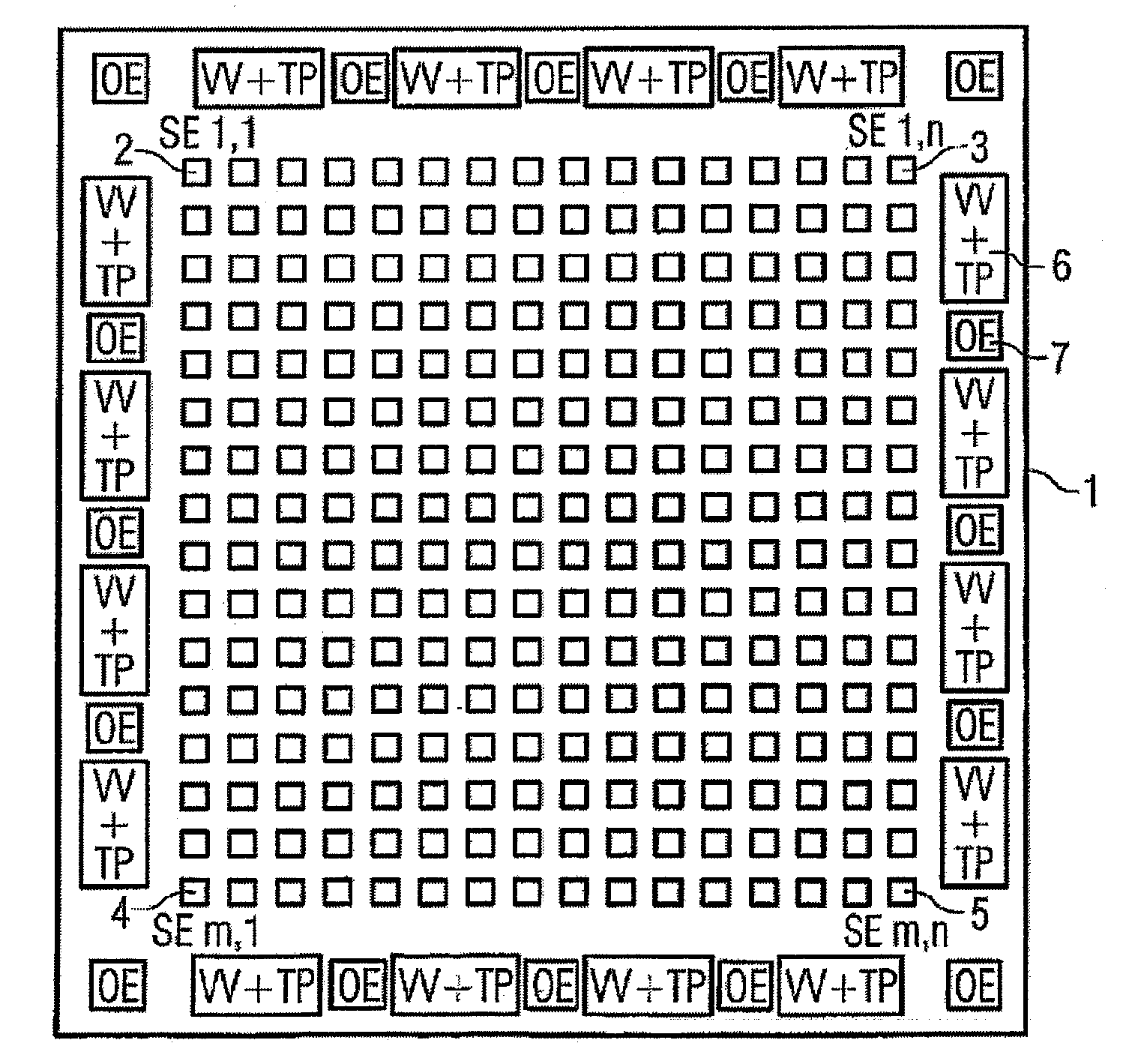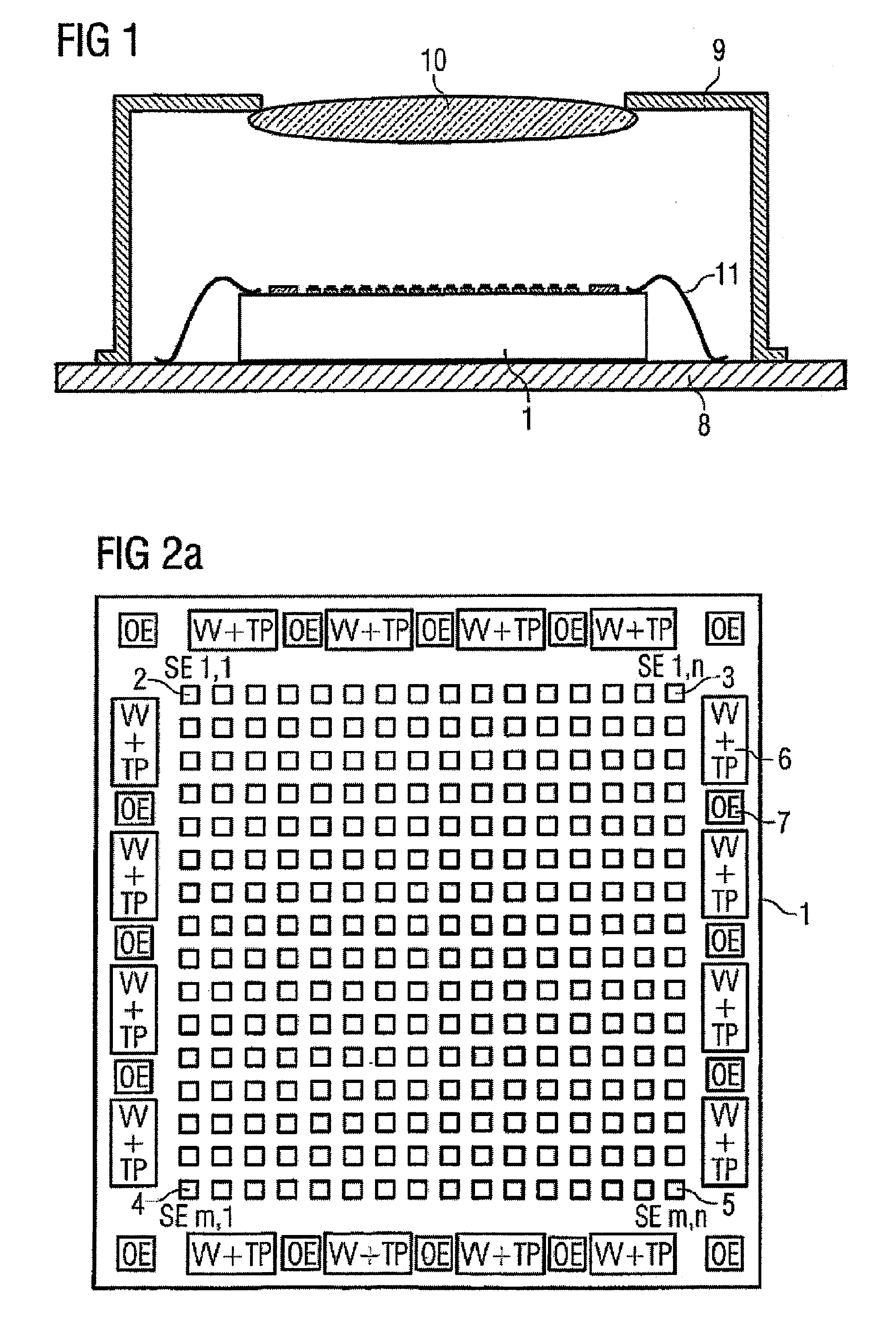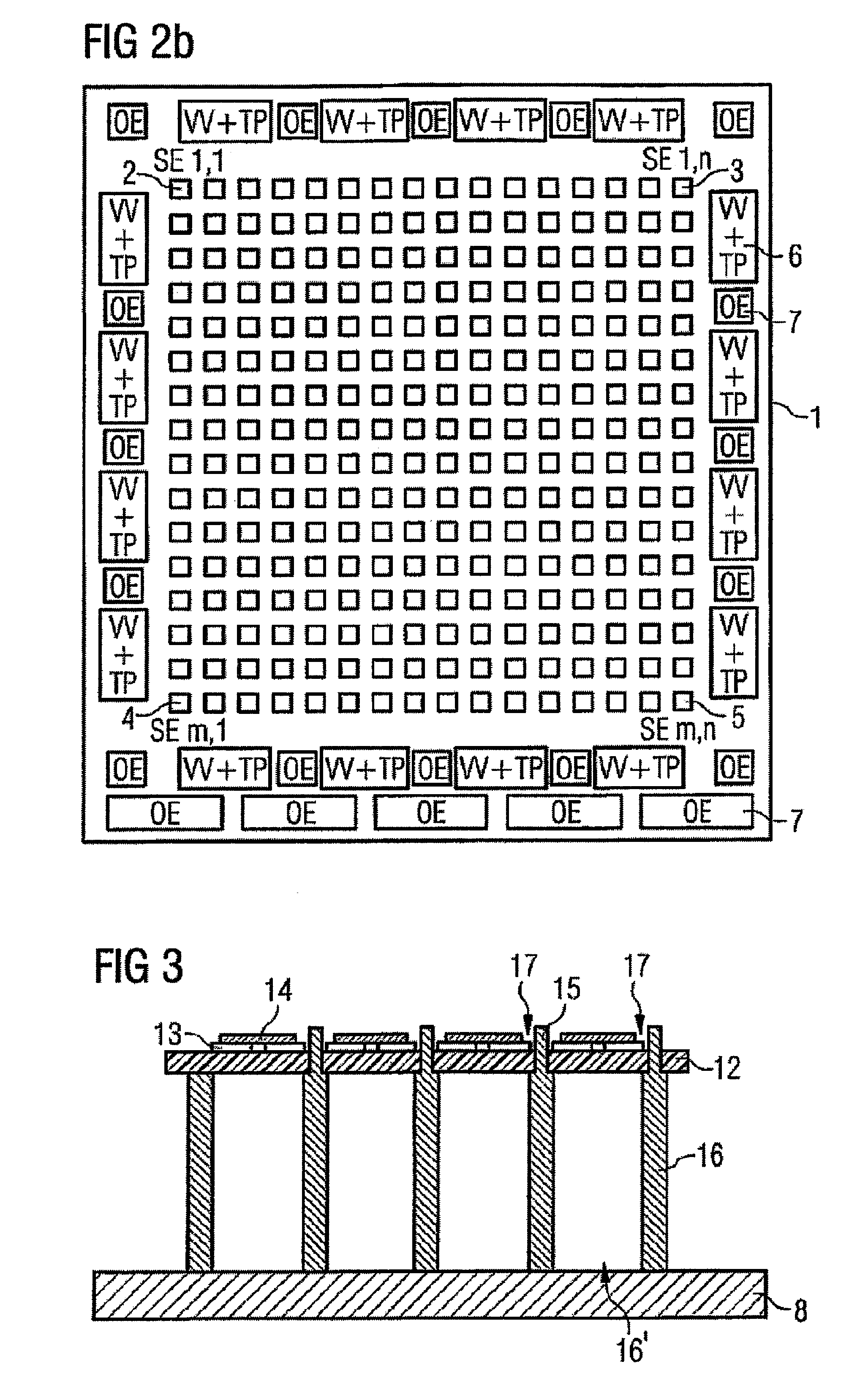Thermopile infrared sensor array
a technology of infrared sensor array and thermoplastic, which is applied in the field of thermoplastic infrared sensor array, can solve the problems of high manufacturing cost, significant increase of sensor cost, and shift of detection limit (thermal resolution) to higher temperatures
- Summary
- Abstract
- Description
- Claims
- Application Information
AI Technical Summary
Benefits of technology
Problems solved by technology
Method used
Image
Examples
Embodiment Construction
[0064]The thermopile sensor array chip (referred to subsequently as sensor chip 1) is applied centrally according to FIG. 1 on a support substrate 8, for example a bottom plate, and covered with a cap 9. The cap 9 contains an opening for the inlet optics 10, which is arranged precisely above the center of the sensor elements of sensor chip 1. The inlet optics 10 can be a plane-parallel filter or a lens optics on one side. The connection between the sensor chip 1 and the support substrate 8 can be produced by joining by gluing, soldering, glazing or also by welding. The joining method should have very high heat conductivity. An adhesive filled with metal or ceramic, a metal-filled glazing or solder is suitable as joining method.
[0065]The variant with filter is not shown in FIG. 1 and in this case a lens must be additionally mounted outside of the housing.
[0066]In the variant depicted in FIG. 1 an imaging lens is provided as inlet optics 10. The dimensions of cap 9, sensor chip 1 and ...
PUM
 Login to View More
Login to View More Abstract
Description
Claims
Application Information
 Login to View More
Login to View More - R&D
- Intellectual Property
- Life Sciences
- Materials
- Tech Scout
- Unparalleled Data Quality
- Higher Quality Content
- 60% Fewer Hallucinations
Browse by: Latest US Patents, China's latest patents, Technical Efficacy Thesaurus, Application Domain, Technology Topic, Popular Technical Reports.
© 2025 PatSnap. All rights reserved.Legal|Privacy policy|Modern Slavery Act Transparency Statement|Sitemap|About US| Contact US: help@patsnap.com



